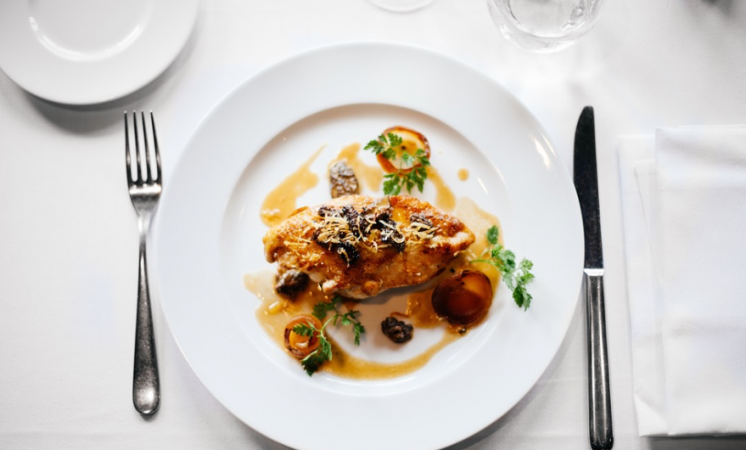You may have seen waiters sailing towards tables, holding silver platters aloft. More importantly for you as a planner, you may have been charged for it on your master account. Professional waiters are adept at several service styles; the most popular is called "French." But there is some confusion on just what French service is.
It is further confused by similarities with butlered and Russian Service. Let’s demystify the styles: First, there are two types of French service – Cart French and Banquet French. Cart French is what most people are familiar with because it is most commonly used in fine-dining restaurants. 
Cart French service
The food is prepared tableside. Hot foods are cooked on a rechaud (hot plate) that is on a gueridon (small table). Cold foods, such as Caesar Salad, are assembled on just the gueridon. Servers plate the finished foods onto individual plates and serve them to guests from the right. (This is the only style of service where food is served from the right).
Some foods, such as desserts, may already be prepared. They are displayed on a cart, the cart is rolled to tableside, and guests are served after making their selections. This style would only be used for small VIP groups.
Banquet French service
Platters of foods are assembled in the kitchen. Servers take the platters to the table where guests are seated. The server, using two large silver forks in his or her serving hand places the food on the guests’ plates. (Now silver salad tongs may be allowed if the forks cannot be coordinated with one hand).
Each food item is served by the server from platters to individual plates. Guests are served from the left. Anything that is added to a plate by a server after it has been placed in front of the guest – soup in a bowl, salad dressing, sauce on dessert, etc. – is part of this type of service.
Butlered service
Foods are presented on trays, from the left of the guest, by servers with utensils available for seated guests to serve themselves. (This is also used for butler passed hors d’ oeuvres at receptions).
Russian (silver) service
Food is cooked tableside, like cart French service, except servers put the foods on platters and then pass the platters at tableside. Guests help themselves to the foods and assemble their own plates. Service is from the left While French cart service and Russian service both prepare food tableside, in Russian, the food goes on platters for the guests to select their own food, and French cart service the food is placed on individual plates before being brought to the table.
Butlered and Russian both allow guests to select their own food from a platter, but the platters are assembled in the kitchen for butlered and tableside for Russian. The most important thing is for the planner and the caterer to have the same understanding. And, the planner should know that these styles take more time and usually cost more.
Find Restaurants with Private Dining on the free Cvent Supplier Network for your next group dining event, private party or business lunch in the U.S. and worldwide.
Need more F & B insights for your upcoming meetings and events? Check out this post!
Written by Patti Shock.




